RECOIL OFFGRID Preparation Understanding the Risks of Mountaineering
Ever climbed a precarious mountain or hung unsupported from a rock face? Even if you haven’t, it’s easy to see that there’s plenty of danger involved in this activity—without any danger, it probably wouldn’t be much fun. However, examining the danger behind more extreme versions of mountaineering can help those of us who prefer mild hiking and climbing to avoid injury. After all, if you know when, where, and how most advanced climbers get hurt, you can better avoid those situations while surviving in mountainous terrain.
Experienced climber Steph Abegg has compiled a series of charts to show mountain climbing injury rates, locations and more. Below, we’ll be breaking them down and explaining what an average survivalist or outdoorsman can learn from the data.
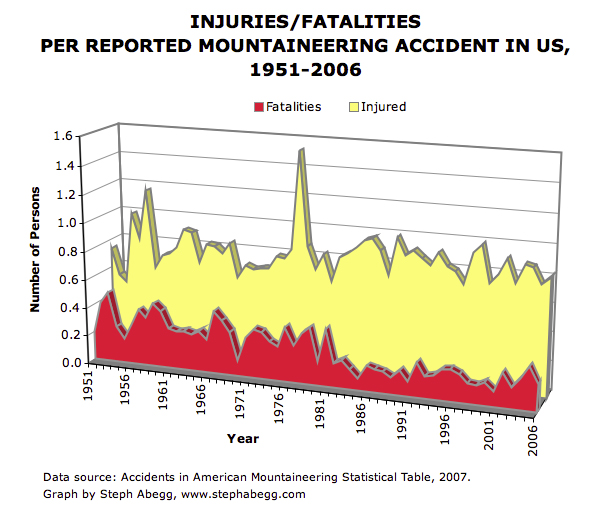
First, we see that over the last 60 years, mountaineering deaths have been declining steadily, but injuries have remained fairly constant. Even with the improvements in technology, gear, and communications since the 1950s, climbers are still getting hurt.
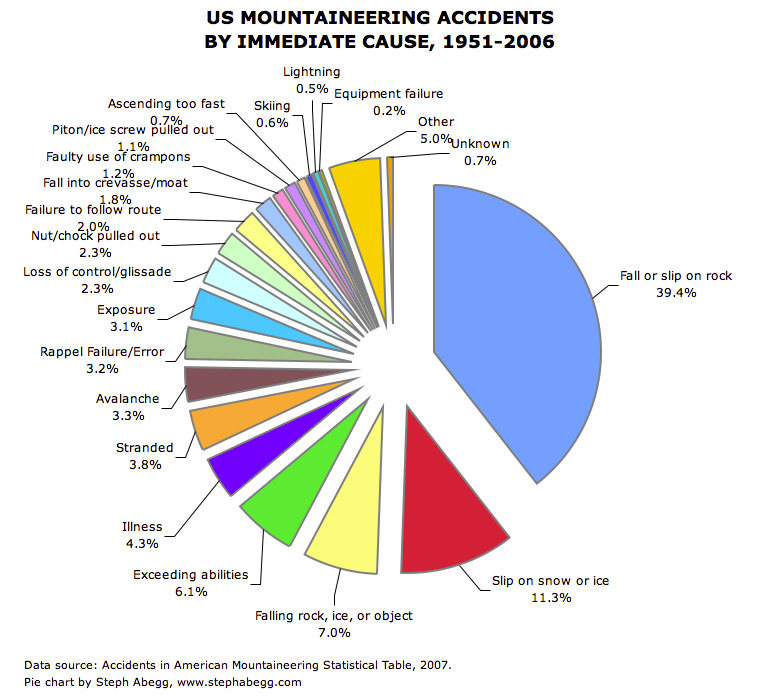

Next, we learn that falling or slipping on rock, snow, or ice is the most common cause of injury. This one is mostly common sense, but it’s also surprising that nearly half of the injuries were caused by other rarer factors like falling rocks and lightning strikes.
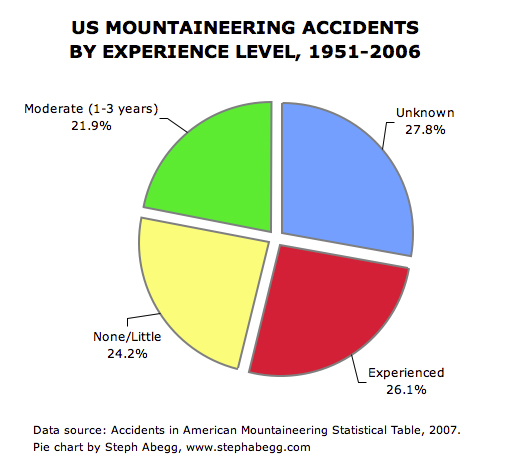
Also surprisingly, injuries were spread almost equally throughout experience levels. You might expect a veteran mountain climber to be more adept at avoiding danger, but at the same time, they tend to take on much more difficult terrain and conditions because they think they can handle it.
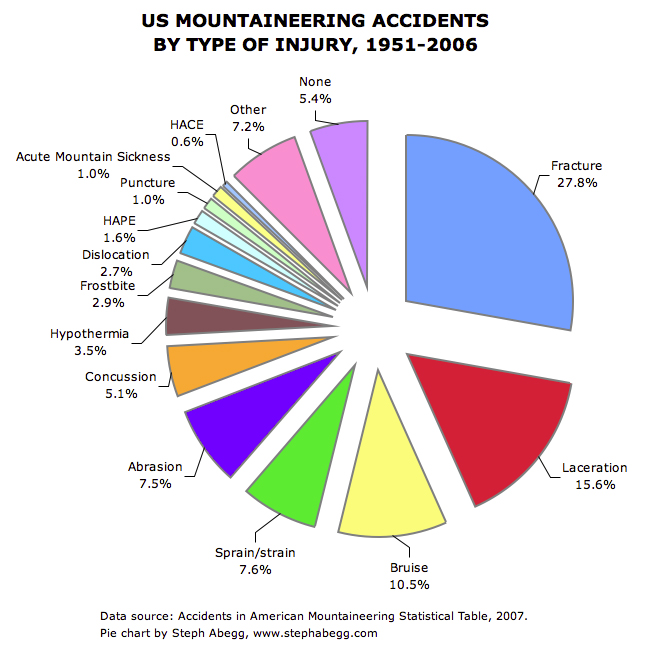
Here’s an analysis of the most common injuries, most of which are to be expected. However, if you know how to apply a splint and treat lacerations in the field before you go mountaineering, you’ll greatly improve your odds of making it home safe.
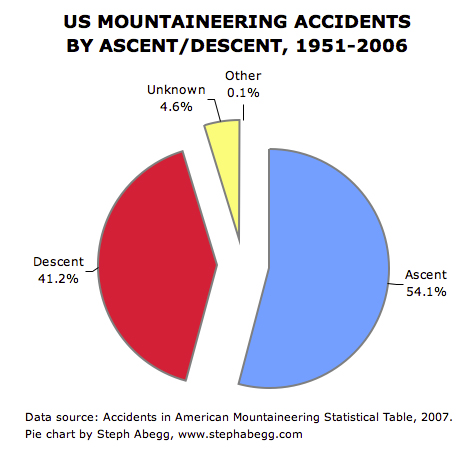
Finally, we learn that you’re almost as likely to get hurt descending a mountain as you are ascending it. Apparently the phrase “all downhill from here” doesn’t necessarily mean safety for mountain climbers. This is also important from a mindset standpoint—when you’re on the way down the mountain, there’s a tendency to get complacent and make dangerous mistakes.
If you spend a lot of time in mountainous terrain, or you may need to do so to survive in the future, it’s worth thinking about these mountaineering facts. Although climbing accidents are rare in the grand scheme of things, if you bear in mind it can happen to anyone, and prepare to handle injuries that may occur, you’ll be much safer out there.
 STAY SAFE: Download a Free copy of the OFFGRID Outbreak Issue
STAY SAFE: Download a Free copy of the OFFGRID Outbreak Issue
No Comments